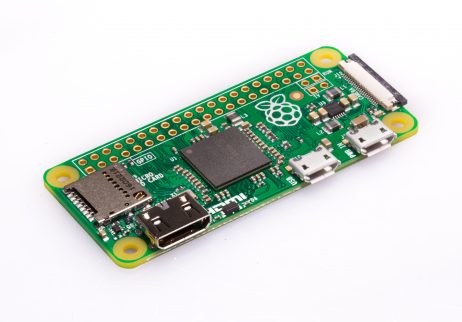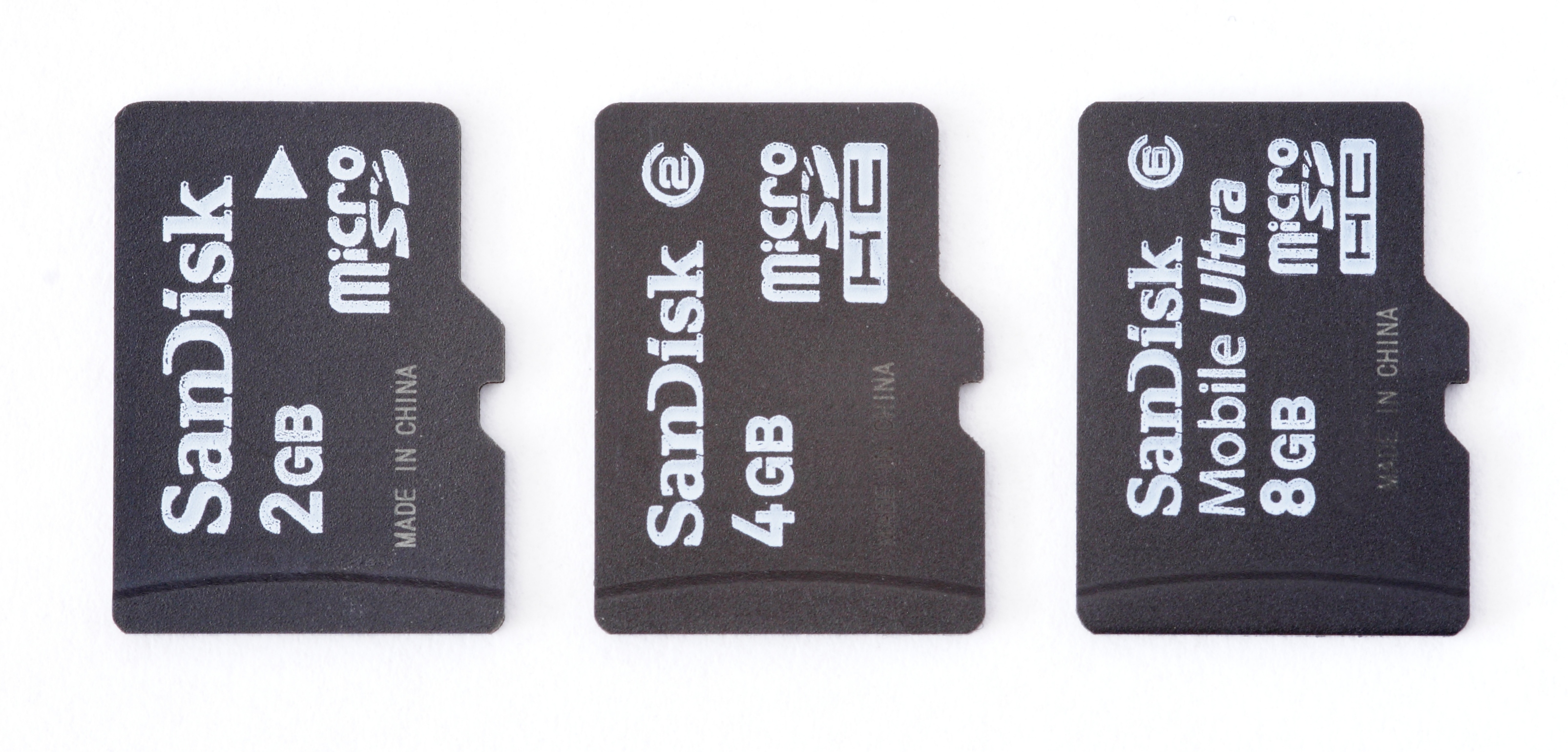For the Android version of this, please see the android branch, as there is a completely different build procedure and resources.
This program uses a Raspberry Pi 0 to act as a U2F token. This permits any person with a Raspberry Pi 0 to try out U2F 2FA for themselves.
Go here and download the Raspbian Stretch Lite image.
If you download the zip, make sure you extract it.
Once you have the *.img file, you must write it to an SD card.
For this, I suggest the use of etcher.io which works cross-platfrom. Alternatively, use whatever image burner you want.
After the image burning has completed, most OSs should automatically mount the SD card. We only need access to the boot partition initially.
Since this device can be set up without a monitor, we shall.
First, we need to enable SSH.
-
Create a
sshfile. Note that this doesn't have any extension. For Linux users, you can open a console in this directory, andtouch sshto create the file. This file enablessshon the latest versions of Raspbian.
-
Edit
config.txt. Using your preferred editor, add the linedtoverlay=dwc2to the end.
-
Edit
cmdline.txt. Again, using your preferred editor, betweenrootwaitand the next word, insertmodules-load=dwc2,g_etherleaving only one space afterrootwaitand one before the next word.
-
Use a known USB micro data cable to connect the Raspberry Pi to a computer.
- If possible, check this cable can transfer data by connecting another device and attempting to transfer a file.
- If possible, use a Linux computer for the next step, one with a graphical network manager.
- If possible, use a USB 3 or higher port instead of a USB 2 port. This is because the USB port will supply the entire power for the Raspberry Pi, and some USB 2 ports may not be able to deliver the required power.
-
Let the Raspberry Pi fully boot up (once the LED stops blinking frequently, it is probably booted). Then you need to configure your network settings.
-
Linux:
-
Use your preferred network manager:
-
Set it's type to be 'Wired Ethernet (shared)' if available, else, 'Wired Ethernet'
-
Ensure the method is set to 'Shared to other computers', or similar.

-
Check your IP address on this network.

-
This shows that the host computer (Linux) has the IP address
10.42.0.1 -
Therefore, the Raspberry Pi has an IP address of
10.42.0.*, where*can be any number 2-255. -
Find the Raspberry Pi's address by using the tool
nmap, installable from your preferred package manager.nmap -sn "10.42.0.*"and look for the IP address which the host doesn't have (i.e. look for the ip address other than 10.42.0.1 in this example).For example, when I ran the command, the output was

so the IP address I am looking for is
10.42.0.172.
-
-
-
-
Connecting
-
Linux users
-
Now finally we can SSH into the Raspberry Pi:
ssh pi@RASPBERRY_PI_IPSo in my example, the command would be:
ssh pi@10.42.0.172
-
-
Other OSs
- For users of windows, see ssh using PUTTY, and for users of OS X, you can simply ssh in using
ssh pi@raspberrypi.localin a terminal.
- For users of windows, see ssh using PUTTY, and for users of OS X, you can simply ssh in using
-
This should then ask you if you want to continue connecting, displaying the ECDSA key. Type
yesand hit enter to continue.
-
Then, when the password is asked for, type
raspberry- the default password in Raspbian.
- Then, change your password using
passwd. Enterraspberryas the current password, and a memorable password for the new password.
Past this point, do not reboot / power off unless you wish to start all over again.
- Edit
/boot/cmdline.txtby usingsudoedit /boot/cmdline.txt- Remove the
modules-load=dwc2,g_etherand ensure there is no trailing space. - Close and save by pressing
ctrl-x.
- Remove the
- Edit
/etc/modulesby usingsudoedit /etc/modules- Add
libcompositeat the end of the file (i.e. not on a line beggining with#).
- Add
- Update package list using
sudo apt-get update - Get git by running
sudo apt-get install git
- Grab the contents of this repository using
git clone https://github.com/Crystalix007/U2FDevice.git - Enter the cloned directory by running
cd U2FDevice - Install the config script using
sudo install -m755 Scripts/Kernel_HID_Config.sh /usr/bin/Kernel_HID_Config.sh - Install the config script startup service by editing
/etc/rc.localsudoedit /etc/rc.local- Add
/usr/bin/Kernel_HID_Config.sh, on a new line, before'exit 0'
- At this point you are once again free to reboot / shutdown.
For Linux only.
On most distributions of Linux, devices get automatically managed based upon certain tags they expose to the computer. This program exposes custom tags to uniquely identify it from other U2F keys. However, as a result, the automatic rules do not include it in the list of USB devices to mount as U2F keys.
On your Linux desktop, run the command ls /etc/udev/rules.d/. Look for anything which seems related to U2F.
For example, on my computer, I have the rules /etc/udev/rules.d/70-u2f.rules.
Inside this file, the contents are:
# Copyright (C) 2013-2015 Yubico AB
#
# This program is free software; you can redistribute it and/or modify it
# under the terms of the GNU Lesser General Public License as published by
# the Free Software Foundation; either version 2.1, or (at your option)
# any later version.
#
# This program is distributed in the hope that it will be useful, but
# WITHOUT ANY WARRANTY; without even the implied warranty of
# MERCHANTABILITY or FITNESS FOR A PARTICULAR PURPOSE. See the GNU Lesser
# General Public License for more details.
#
# You should have received a copy of the GNU Lesser General Public License
# along with this program; if not, see <http://www.gnu.org/licenses/>.
# this udev file should be used with udev 188 and newer
ACTION!="add|change", GOTO="u2f_end"
# Yubico YubiKey
KERNEL=="hidraw*", SUBSYSTEM=="hidraw", ATTRS{idVendor}=="1050", ATTRS{idProduct}=="0113|0114|0115|0116|0120|0200|0402|0403|0406|0407|0410", TAG+="uaccess"
# Happlink (formerly Plug-Up) Security KEY
KERNEL=="hidraw*", SUBSYSTEM=="hidraw", ATTRS{idVendor}=="2581", ATTRS{idProduct}=="f1d0", TAG+="uaccess"
# Neowave Keydo and Keydo AES
KERNEL=="hidraw*", SUBSYSTEM=="hidraw", ATTRS{idVendor}=="1e0d", ATTRS{idProduct}=="f1d0|f1ae", TAG+="uaccess"
# HyperSecu HyperFIDO
KERNEL=="hidraw*", SUBSYSTEM=="hidraw", ATTRS{idVendor}=="096e|2ccf", ATTRS{idProduct}=="0880", TAG+="uaccess"
# Feitian ePass FIDO
KERNEL=="hidraw*", SUBSYSTEM=="hidraw", ATTRS{idVendor}=="096e", ATTRS{idProduct}=="0850|0852|0853|0854|0856|0858|085a|085b", TAG+="uaccess"
# JaCarta U2F
KERNEL=="hidraw*", SUBSYSTEM=="hidraw", ATTRS{idVendor}=="24dc", ATTRS{idProduct}=="0101", TAG+="uaccess"
# U2F Zero
KERNEL=="hidraw*", SUBSYSTEM=="hidraw", ATTRS{idVendor}=="10c4", ATTRS{idProduct}=="8acf", TAG+="uaccess"
# VASCO SeccureClick
KERNEL=="hidraw*", SUBSYSTEM=="hidraw", ATTRS{idVendor}=="1a44", ATTRS{idProduct}=="00bb", TAG+="uaccess"
# Bluink Key
KERNEL=="hidraw*", SUBSYSTEM=="hidraw", ATTRS{idVendor}=="2abe", ATTRS{idProduct}=="1002", TAG+="uaccess"
# Thetis Key
KERNEL=="hidraw*", SUBSYSTEM=="hidraw", ATTRS{idVendor}=="1ea8", ATTRS{idProduct}=="f025", TAG+="uaccess"
# Nitrokey FIDO U2F
KERNEL=="hidraw*", SUBSYSTEM=="hidraw", ATTRS{idVendor}=="20a0", ATTRS{idProduct}=="4287", TAG+="uaccess"
# Google Titan U2F
KERNEL=="hidraw*", SUBSYSTEM=="hidraw", ATTRS{idVendor}=="18d1", ATTRS{idProduct}=="5026", TAG+="uaccess"
LABEL="u2f_end"
Basically, this file contains the same contents as Yubico's udev rules.
If you don't have any rules, download the raw file, and copy it to the /etc/udev/rules.d/ directory.
Then, add:
# Rapsberry Pi U2F
KERNEL=="hidraw*", SUBSYSTEM=="hidraw", ATTRS{idVendor}=="1209", ATTRS{idProduct}=="2900", TAG+="uaccess"
on lines just before LABEL="u2f_end".
Then, reload the rules using sudo udevadm control --reload-rules
- Grab all the submodules using
git submodule update --init --recursive - Copy the
cpp-base64Makefile usingcp Scripts/cpp-base64-Makefile cpp-base64/Makefile - Copy the
micro-eccMakefile usingcp Scripts/uECC-Makefile micro-ecc/Makefile - Make the object file directories using
mkdir obj && mkdir cpp-base64/obj && mkdir micro-ecc/obj - Grab the required library using
sudo apt-get install libmbedtls-dev
If you wish to do this automatically, just run ./GenCertificates.sh, and answer the prompt with as much detail as you feel like entrusting to websites.
Alternatively, see Readme.AttestationCertifcateGeneration.md for a much more manual approach.
- Run
make
- Run
sudo make install
This device cannot be powered off without running a command in SSH (for now). If the device has its power interrupted by a sudden poweroff, it is likely there will be corruption which will render all data on the SD card useless.
So, to power off currently, SSH into the device as shown above, then run the command sudo poweroff ; exit
This project is intended solely for the use in experimentation of the use of U2F or as a backup for keys. It is not intended for use as a regular day-to-day key for several reasons.
- Private keys are stored in a freely accessible file (to users of the pi)
/usr/share/U2FDevice/U2F_Priv_Keys.txt - This program doesn't comply with the specification with regards to user interaction. There is a specific code sent to check for user interaction for registering or authenticating keys. This requirement is ignored by this implementation as there are no pre-existing buttons on the Pi.
- Whilst this program is functional, it has the possibility of unintended crashes. I have tested to the limits I require, but you may require additional assurance.
- This program's private keys are stored on an SD card. This is an incredibly volatile medium (and yes, regularly I mean that in the computing sense - SD cards regularly do cleanup / maintenance routines that can cause complete corruption if the power is lost suddenly). I would not consider these keys safe under very regular use (infrequent use should be fine though).
- This solution is rather unwieldy - it requires a long boot time and must be shutdown (for now) with a command using SSH.
For these reasons, if you want to use this as a way to backup your other U2F devices against loss, this may be a very valid solution, but please don't rely solely on this solution for U2F security.
- Install
rng-toolswithsudo apt-get install rng-tools
By using a custom attestation certificate, you lose the anonymity of conventional u2f keys. This is because they are produced in large batches and thus can share a single certificate, burned into some private ROM. However, since you require the private key to sign, and this repo is public, it is impossible to use a single signature for everyone who uses this repository.
However, by generating your own certificate, you can be more assured about the inherent security of your certificate (no-one can leak the private key but you).
Note, however, that this key and certificate is only used for registration - not for further authentication.
See the Readme.AttestationCertificateGeneration.md
Run sudo systemctl start U2FDevice.service
At this point, the program should be tested using U2F demo websites. For example, Yubico's U2F demo, or appspot's U2F demo. First register the device, then test authentication.
If the program doesn't work on these - don't use as a backup device.
Once the program runs successfully, you can enable automatic startup at boot.
Run sudo systemctl enable U2FDevice.service
For those of you wishing to dig around in the actual protocol work, these are the files used by the application to log the activity.
The documents used for raw communication contain just that - the raw data sent to and from the device.
To view this data, I would recommend using od . For example, cat /tmp/comdev.txt | od -tx1 -Anone -v in order to print out the bytes sent from the Raspberry Pi to the PC in hexadecimal form.
The documents used for packets show the higher-level structures used in the U2F protocol. The first level above the data sent in USB frames is the U2F-HID protocol. The most recent specification for these packets is available here (as of 12/07/2018). This level details mainly how the PC performs the setup for talking to the device.
The next level above that is the actual U2F protocol. The most recent specification for these messages is available here (as of 12/07/2018). This level details how registration and authentication actually occurs.
-
Raw communication
- /tmp/comdev.txt
- /tmp/comhost.txt
-
Packets
- /tmp/devPackets.html
- /tmp/devAPDU.html
- /tmp/hostPackets.html
- /tmp/hostAPDU.html










